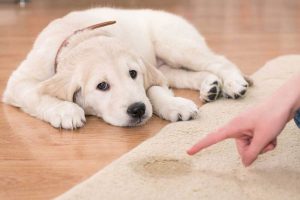
Does your puppy forget to eliminate inside the house? swinging, chewing furniture, digging, barking, whining and submissive urinating? If so, then your puppy potty training problem might be your preference. Over 70% dogs of all breeds and sizes could use some kind of puppy potty training help.
Puppy potty training is basically one of three things: either you are teaching your puppy not to pee or potty inside the house, teaching your puppy to pee or potty outside or teaching your puppy some other way to achieve permanent housebroken behavior.
What age is your puppy? Larger puppies tend to have bladder control issues. They must be taught to hold urine, but as they get older, they must learn to hold it. Puppies must be slowly introduced to taking their urine outside. The faster you teach the puppy how to eliminate outside, the sooner you will be able to stop paying this high dollar per month for a trainer.
Various bits of advice for housebreaking your dog are:*Make sure your puppy is present in the house so it can view the family and easily learn what your household rules are.*Keep the puppy in the same room as you when you are home.*Keep all food, water, toys and bedding in the same room.*Keep your puppy in the crate when you are home which helps to prevent it from wandering around at night.*Keep your puppy on a regular feeding schedule to eliminate frequent “accidents.”
Dogs are creatures of habit and being home all day breaks the dog’s schedule. Allowing your puppy to have free roam of the house before it is housebroken is basically inviting it to have accidents.
This is especially true when you only have a very small apartment or lager. This creates “accidents.” It is easier to clean up one accident than it is to clean up 12 or more.
If you do happen to find an accident, here are some things you should do:
Take the puppy out immediately. Using a leash, take the dog out to the same spot every time and issue the same command. Create an impressive good impression. If you want to be effective, you must do this every single time.
There is a lot of time you will share with the puppy. Eventually, it will understand the rules and your routine. You should have consistency from the start. Once the puppy understands what is expected, it will be happier and you will be happier when your puppy is trained.
If you didn’t see the accident occur, catch your puppy in the act and correct it gently. This does nothing except apply major pressure to the puppy.
A friend who runs a Virtual Ergonomics Workshop gave me this advice when her puppy was misbehaving. Give consistent commands, both verbal and nonverbal. The nonverbal command is usually understood by the dog faster than the verbal command and should be the norm.
Never use an object such as a ball or toy as a form of entertainment. If you catch your puppy “in the act” you can clap your hands or say “no” firmly and move the puppy outside or wherever it was doing it the wrong way. Now clean up the mess and move on. Your puppy will understand what is expected from it when you are firm but gently.
Depending on your puppy’s age, its genes, its breed and its personality, puppy potty training takes a lot longer.